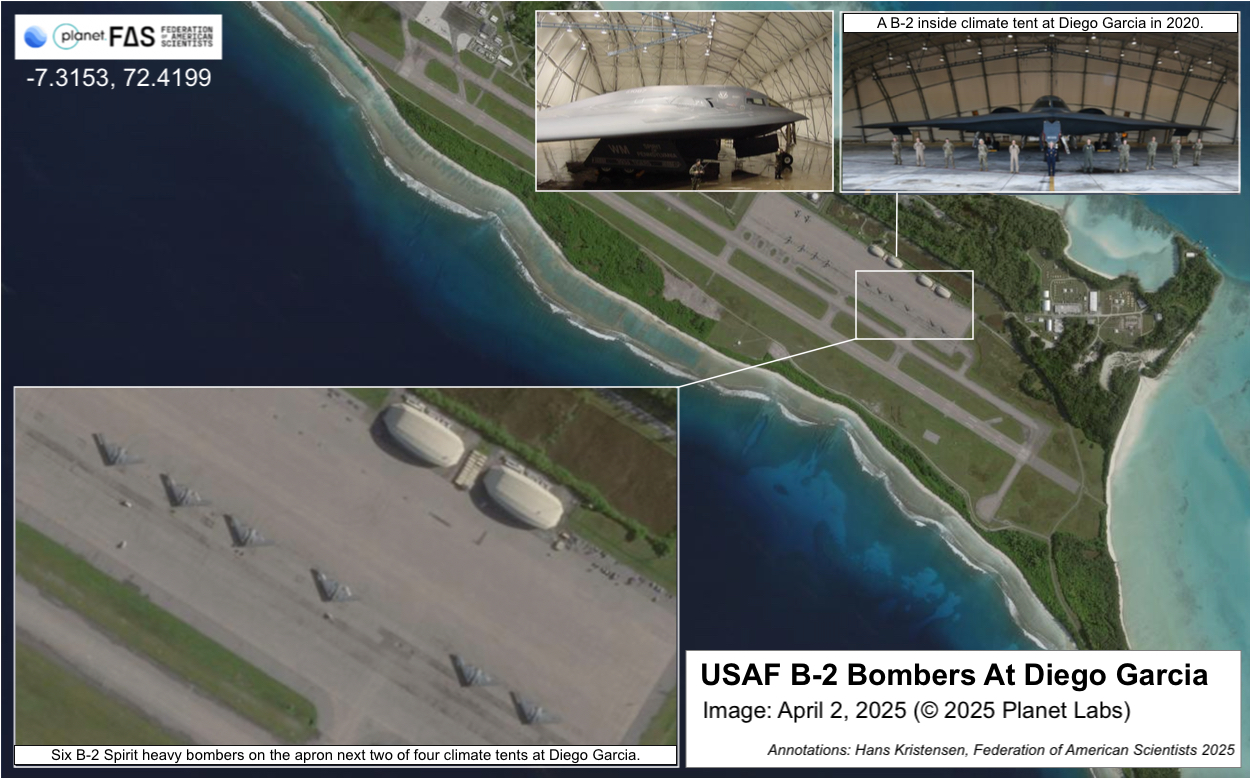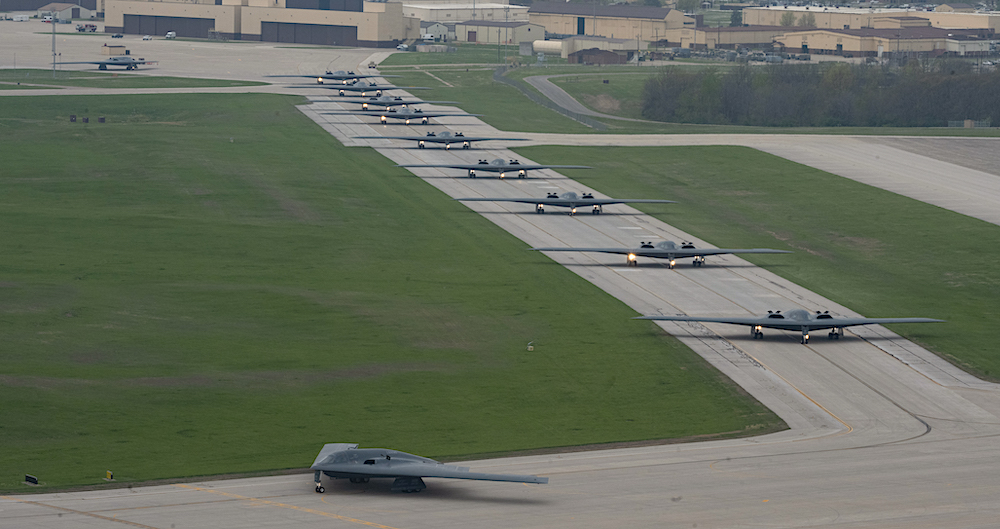
Half of Operational B-2 Force Deploys to Diego Garcia
The United States Air Force has forward deployed about one-third of its B-2 stealth bombers to Diego Garcia, or about half the B-2s considered fully operational at any given time. A Planet Labs satellite image taken earlier today shows six of the characteristic bombers on the apron alongside six refueling tankers.

A Planet Lab satellite image from earlier today shows six B-2 bombers at Diego Garcia in the Indian Ocean.
The current deployment of at least six B-2s to Diego Garcia is unusually large and exceeds the number of climate tents at the base designed to protect the sensitive surface of the bombers. The current deployment began a week ago.
US bombers regularly deploy on so-called Bomber Task Force missions to bases overseas or long-range exercise flights. That has included occasional B-2 bombers to Diego Garcia before (one in 2024 (hot pit refuel) and three in 2020), but the visits are rare and B-2s are designed to carry out global strike missions without having to deploy to forward locations. A B-2 strike against the Houthis in November 2024, for example, was flown directly from Whiteman AFB.
B-52 bombers have also deployed to Diego Garcia, including in 2024.
During 2024, U.S. bombers (B-1, B-2, and B-52) were deployed about 60 percent of the year to a theater or providing continental U.S. (CONUS) -to-CONUS flights in support of theaters or in support of U.S. Strategic Command and the Chairman of Joint Chiefs of Staff,” according to the U.S. Air Force.
During the past week the number of bombers visible at the base has fluctuated from none to two or four, indicating that the remaining bombers are either inside the climate tents or airborne on a training or perhaps bombing mission against Houthis forces. The U.S. Air Force operates a fleet of 20 B-2s. Of these, one is a test aircraft, and normally only 10-12 are considered fully operational with the rest undergoing repairs and routine maintenance. During the Spirit Vigilance exercise in April 2024, for example, the 509th and 131st bomber wings at Whiteman AFB in Missouri conducted a “mass fly-off” of all the operational B-2 bombers.

The B-2s deployed at Diego Garcia constitute about half of the operational B-2s, seen here in a “mass fly-off” exercise at Whiteman AFB in 2024.
That means about half of the entire operational B-2 force is currently forward deployed at Diego Garcia. The large deployment to Diego Garcia is part of evolving B-2 operations in the Western Pacific and Indian Ocean that also involve more deployments to Australia.
The B-2 bombers are dual-capable, which means they can deliver both conventional and nuclear weapons. Conventional weapons include precision guided bombs and cruise missiles as well as heavy earth penetrators. Nuclear weapons include the B61-12 guided bombs and the B61-11 nuclear earth-penetrator (the B61-7 has been replaced by the B61-12 and the B83-1 is no longer operational). There are no nuclear weapons on this Diego Garcia mission.
Background: United States Nuclear Weapons, 2025
The FY2026 National Defense Authorization Act (NDAA) paints a picture of a Congress that is working to both protect and accelerate nuclear modernization programs while simultaneously lacking trust in the Pentagon and the Department of Energy to execute them.
While advanced Chinese language proficiency and cultural familiarity remain irreplaceable skills, they are neither necessary nor sufficient for successful open-source analysis on China’s nuclear forces.
Satellite imagery has long served as a tool for observing on-the-ground activity worldwide, and offers especially valuable insights into the operation, development, and physical features related to nuclear technology.
This report outlines a framework relying on “Cooperative Technical Means” for effective arms control verification based on remote sensing, avoiding on-site inspections but maintaining a level of transparency that allows for immediate detection of changes in nuclear posture or a significant build-up above agreed limits.